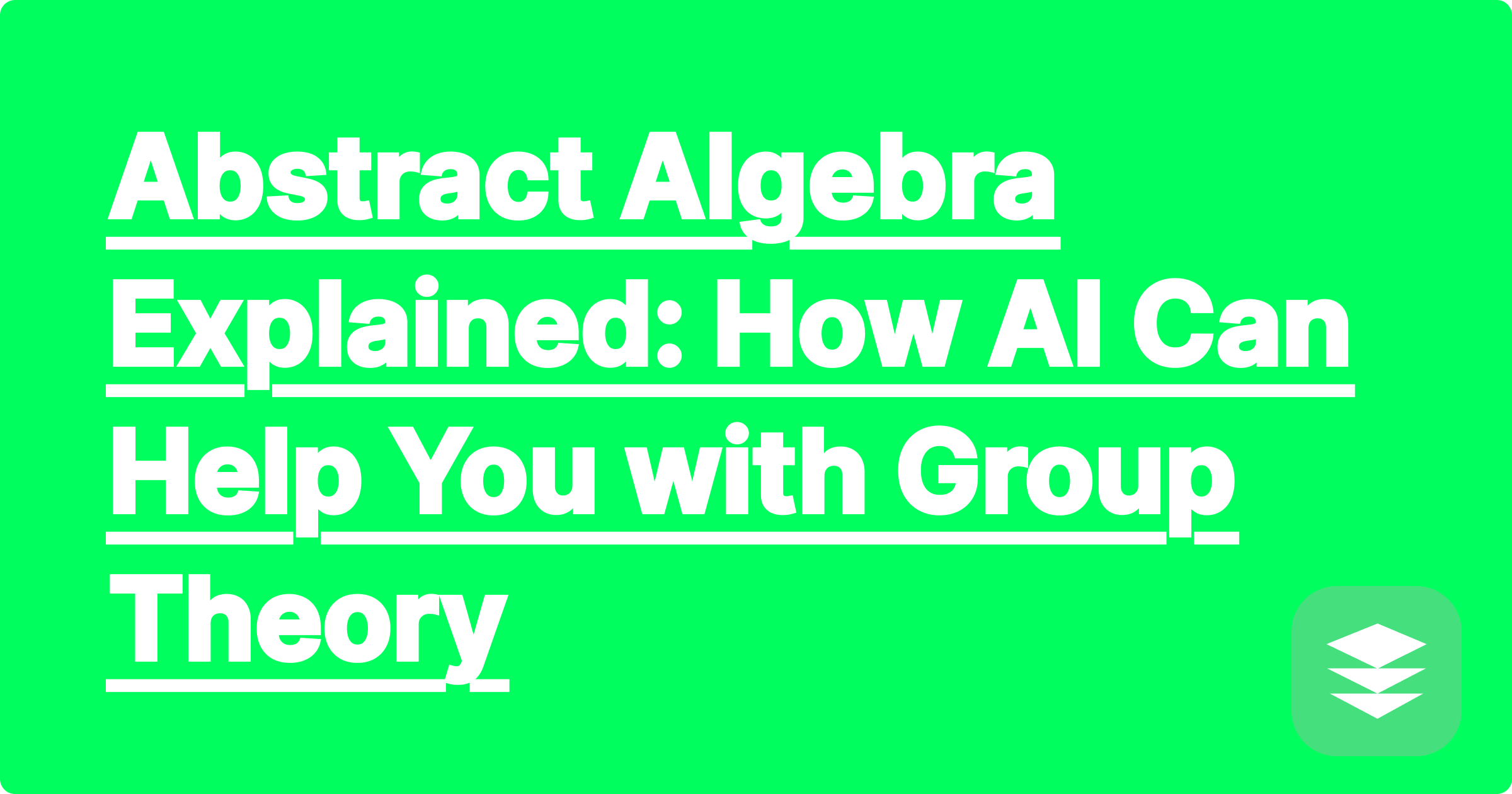
If you are a math major, Abstract Algebra is a rite of passage. It's the course where you leave behind the comfortable world of numbers and enter a realm of pure structure. You're no longer solving for 'x'; you're proving the properties of abstract objects called groups, rings, and fields. The level of abstraction can be jarring, and the focus on rigorous proofs is a major challenge for many students.
How do you study a subject where there are no numbers to compute? How do you master the art of the proof?
This is where an AI assistant can be a revolutionary study partner. A tool like GPAI Solver can act as your personal tutor for abstract algebra, providing abstract algebra homework help by breaking down complex definitions, generating examples of groups, and walking you through the logic of a proof. It's the perfect companion for tackling a group theory problems solver.
Abstract Algebra requires a completely different way of thinking than calculus or linear algebra.
The first step to success is building a solid foundation. An AI can help you translate abstract definitions into concrete understanding.
Your Prompt: "Explain the three axioms of a group (closure, associativity, identity, inverse) in simple terms, and give me a simple example of a group and a set that is NOT a group."
GPAI's Response:
This immediate comparison makes the abstract axioms feel concrete.
Many homework problems involve testing the properties of specific groups. An AI can automate these checks.
Your Prompt: "Consider the set of 2x2 invertible matrices with real entries. Is this a group under matrix multiplication? Walk me through checking the axioms."
GPAI Solver can then provide a step-by-step analysis:
The hardest part of abstract algebra is writing proofs. An AI can't replace your own logical thinking, but it can be an incredible "proof assistant."
Your Prompt: "Give me a step-by-step outline for a proof that the identity element in a group is unique."
The AI can provide the logical structure of the proof:
By seeing this logical "scaffolding," you can learn how to structure your own proofs more effectively.
Abstract algebra is a beautiful and foundational subject, but its learning curve is steep. By using an AI assistant to provide clear definitions, work through examples, and outline proofs, you can demystify the abstraction. This allows you to build the intuition and logical rigor needed to succeed in the course and in all of higher mathematics.
[Feeling lost in your abstract algebra class? Try GPAI Solver today. Get step-by-step help with group theory problems and proofs. Sign up now for 100 free credits.]
Abstract Algebra Explained: How AI Can Help You with Group Theory
Mastering Real Analysis: An AI Tool for Proofs and Theorems
Your Personal AI Assistant for Statistical Analysis in R or Python
Probability Theory Problems, Solved Step-by-Step with AI
From Data Set to Insights: How AI Can Automate Your Stats Project
The Ultimate Guide to Mathematical Proofs with AI Assistance
Surviving Numerical Methods: An AI for Root-Finding and Integration Algorithms
Topology for Beginners: How AI Can Help Visualize Abstract Spaces
How to Create the Perfect Cheatsheet for Your Statistics Final
The Future of Mathematics: How AI is Changing How We Learn and Discover